Beyond the Digital: The Value of the Physical Model in the Education of Architects and Engineers the TCU Fort Worth Case Study.
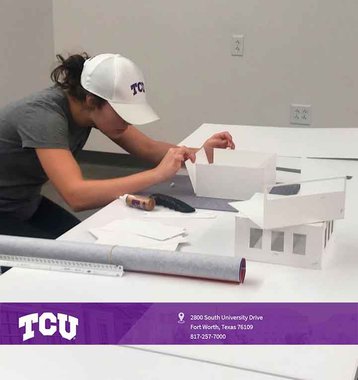
In the educational path of architects and engineers, building a physical scale model remains a fundamental step.
It is not merely an aesthetic or technical exercise, but a complete cognitive experience that connects theory to the material reality of construction.
Each cut, joint, or structural detail forces the student to confront the laws of physics, proportion, and stability: a small building in miniature thus becomes a true laboratory for deep learning.
From Theory to Material
As Donald Schön asserted, the true designer learns by thinking while acting.
The act of building models compels reflective reasoning: it is no longer only about drawing shapes but about making them work.
The need to adapt parts, correct errors, and revise proportions develops in students a practical intelligence that no manual can teach.
It is when an element “doesn’t stand up” that one truly learns the meaning of balance, resistance, and structural coherence.
Materiality and the Intelligence of the Hands
According to Finnish architect Juhani Pallasmaa, architectural experience engages all the senses, not only sight.
The relationship with matter — its textures, smell, and temperature — is an essential part of the creative process.
Building a model activates tactile and sensory knowledge that merges with the mind: the hand is not a mere instrument, but an extension of thought.
Through manual action, an intuition takes shape, and a vague idea becomes a concrete presence.
(inspired by J. Pallasmaa, “The Thinking Hand”, 2009)
The Patience of the Builder
Constructing a model requires patience and precision.
Material difficulties — a joint that doesn’t hold, a surface that warps, a slight inaccuracy — become part of the learning process.
Correcting, recalculating, finding new materials or assembly methods: each step teaches how to join theory and practice, mind and hand.
It is an exercise in both discipline and creativity — a method for learning to think by building.
The Hand and the Screen: Tradition and Technology
In our time, dominated by digital tools, Pallasmaa reminds us that architecture remains a craft — a knowledge founded on continuity between the designer and the maker.
He warns that relying exclusively on electronic drawing risks breaking the tactile and sensual link between imagination and the designed object.
The computer is not an enemy — it is an indispensable ally for precision and speed — but it should not replace the bodily and artisanal dimension of creation.
True creativity arises where the mind imagines and the hand experiments, where pencil, model, or material act as bridges between thought and physical reality.
International Educational Experiences: the TCU Case Study – Fort Worth, Texas
A highly relevant reference for those exploring the relationship between light, space, and physical modeling is the Master in Lighting Design at Texas Christian University (TCU) in Fort Worth, Texas.
At TCU, light experimentation is approached in an integrated way: students alternate digital and analog activities, turning the workshop into a true space for sensory and technical research.
Alongside digital modeling, they construct physical scale models and test them using tools such as the Orchard Heliodon, which allows precise study of sunlight variation throughout the day.
The program also includes a Light Lab, a fully equipped room for comparative testing of various light sources and artificial lighting scenarios, and a Model Lab where material prototypes are developed, photographed, and presented to instructors and juries.
This interdisciplinary approach—centered on the physical and perceptual experimentation of light—mirrors the same philosophy that guides our work in the Betanit laboratories: the belief that only the encounter between theory, simulation, and matter can train designers who understand light as the constructive substance of space.
TCU academics program Architectural Lighting Design
A Bridge Between Digital and Manual
The physical model is not in competition with virtual modeling; they are complementary tools.
The former trains material sensitivity and structural awareness;
the latter expands analytical and representational possibilities.
Only by integrating the two can we achieve a balanced education, where technology and craftsmanship interact and enhance each other.
Conclusions
Building a physical model means:
- grasping the concrete logic of construction;
- developing skills of observation and precision;
- cultivating an active relationship between idea and matter;
- nurturing a form of manual intelligence able to accompany the digital evolution of the profession.
In the small workshop where a model is assembled, the student experiments with what lies at the heart of architecture itself:
transforming thought into space, vision into matter, and a drawing into reality.
Juhani Pallasmaa – The Thinking Hand: Existential and Embodied Wisdom in Architecture, Wiley, 2009.
Finnish architect and theorist (b. 1936), major figure in phenomenological thought in architecture.
Donald A. Schön – The Reflective Practitioner: How Professionals Think in Action, 1983.
American philosopher (1930–1997) who developed the concept of “reflection‑in‑action,” essential in design education.
Richard Sennett – The Craftsman, Yale University Press, 2008.
British‑American sociologist exploring the ethical and formative value of manual work as a foundation of creative intelligence.
Other suggested readings:
- Peter Zumthor, Thinking Architecture, Birkhäuser, 2006.
- David Pye, The Nature and Art of Workmanship, Herbert Press, 1968.
Texas Christian University (TCU) – Fort Worth, Texas, USA
Founded in 1873, Texas Christian University is a private American university known for its commitment to research and innovation in the fields of art, architecture, and applied engineering.
Within the College of Fine Arts, the Lighting Design Program stands out for combining digital experimentation, physical modeling, and perceptual analysis of light.
Its educational facilities include a Light Lab, a Model Lab, and advanced tools for the study of natural and artificial lighting.
Media
-
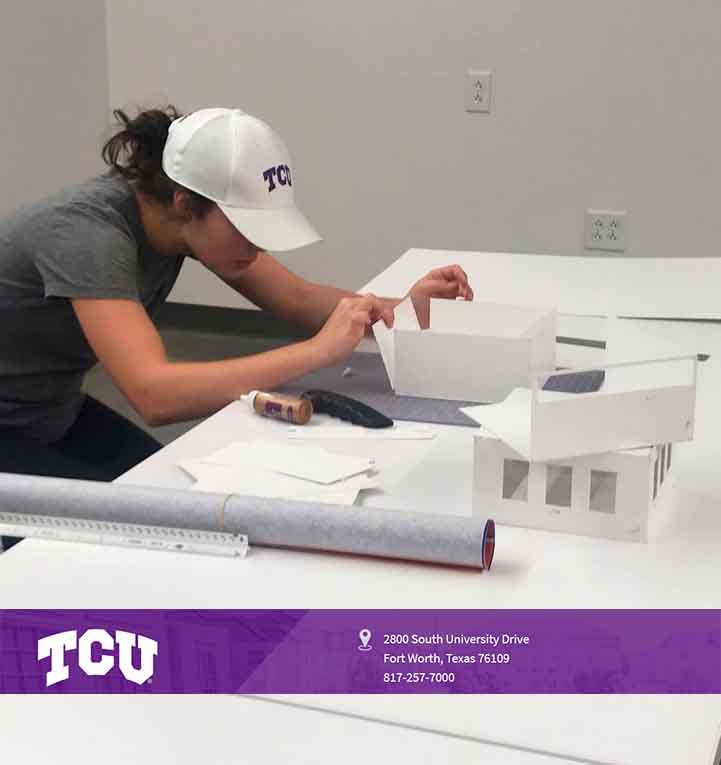 building scale models at TCU
(20.2 KB).
building scale models at TCU
(20.2 KB).
-
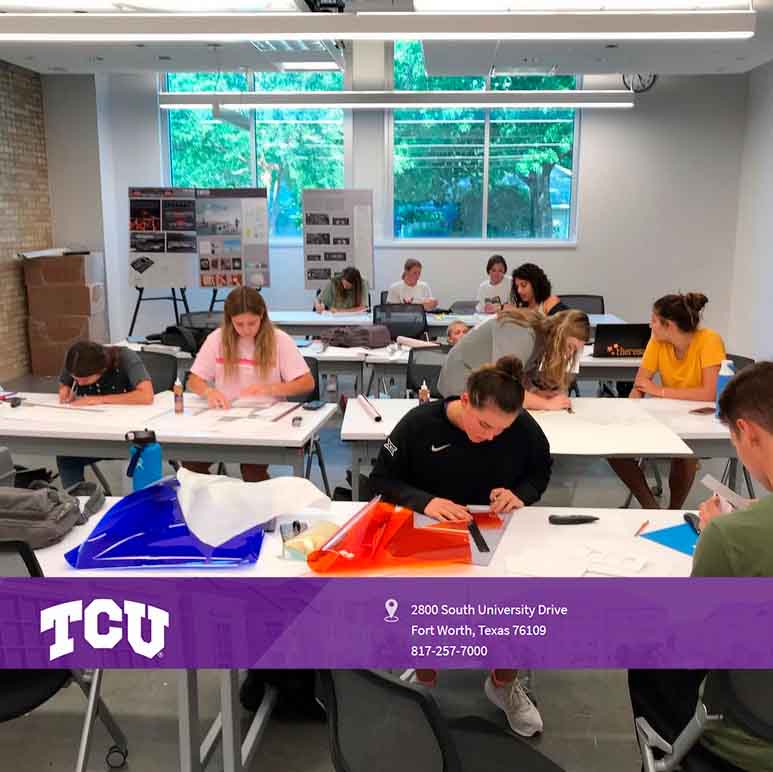 3rd year students are in the final weeks of their Passive Design Studio. Today we had to start their 3rd physical model.
(46.3 KB).
3rd year students are in the final weeks of their Passive Design Studio. Today we had to start their 3rd physical model.
(46.3 KB).
-
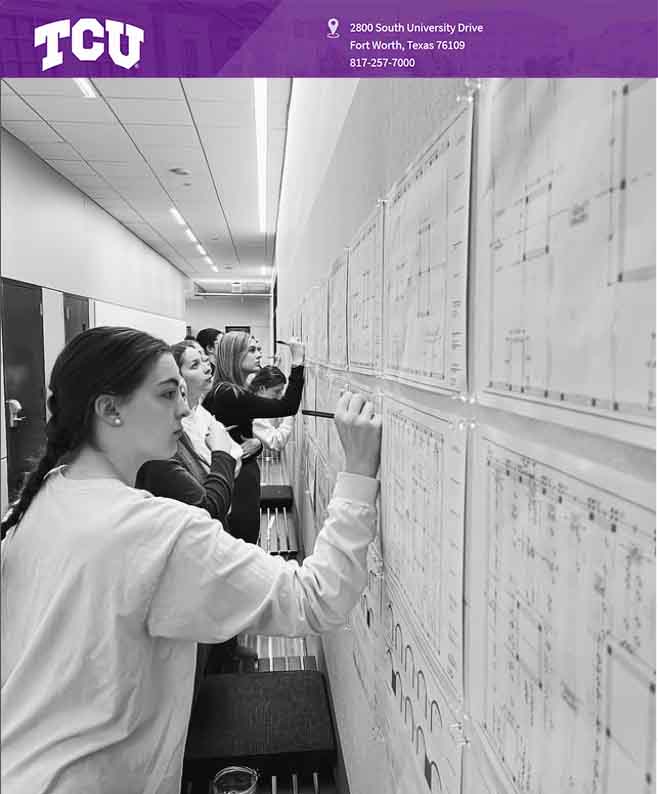 See it ➡️ Sketch it ➡️ Draft it
2nd Year - Digital Media in Lighting pinup and critiques
(31.5 KB).
See it ➡️ Sketch it ➡️ Draft it
2nd Year - Digital Media in Lighting pinup and critiques
(31.5 KB).
-
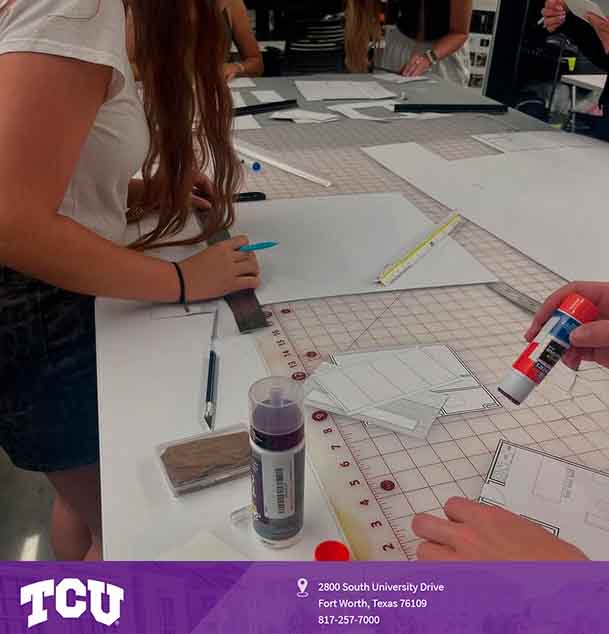 2nd Year students in Fundamentals of Lighting are starting their Daylight Studies this week. They are constructing to scale models to simulate the difference between various daylight apertures including clerestories, vertical windows, curtain walls and skylights.
(24.8 KB).
2nd Year students in Fundamentals of Lighting are starting their Daylight Studies this week. They are constructing to scale models to simulate the difference between various daylight apertures including clerestories, vertical windows, curtain walls and skylights.
(24.8 KB).
-
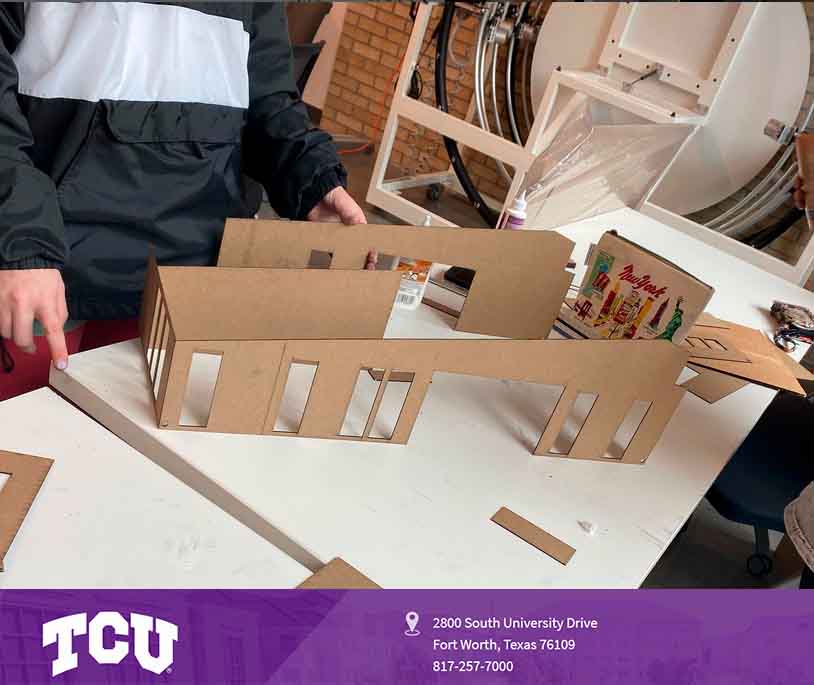 Juniors are starting their daylight models - round 1
(37.6 KB).
Juniors are starting their daylight models - round 1
(37.6 KB).
-
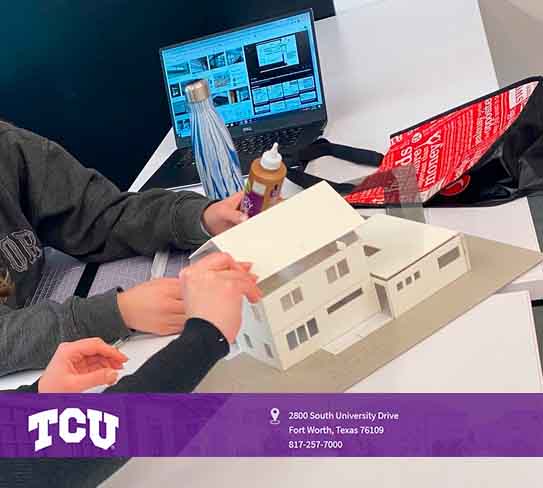 2nd Year students in Fundamentals of Lighting are starting their Daylight Studies this week. They are constructing to scale models to simulate the difference between various daylight apertures including clerestories, vertical windows, curtain walls and skylights.
(22.6 KB).
2nd Year students in Fundamentals of Lighting are starting their Daylight Studies this week. They are constructing to scale models to simulate the difference between various daylight apertures including clerestories, vertical windows, curtain walls and skylights.
(22.6 KB).
-
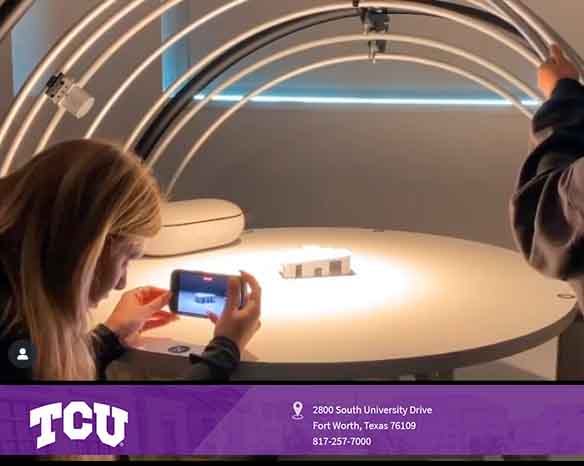 Students are working on their daylight studies on their scale model in the Beta nit Heliodon orchard.
(18.8 KB).
Students are working on their daylight studies on their scale model in the Beta nit Heliodon orchard.
(18.8 KB).
-
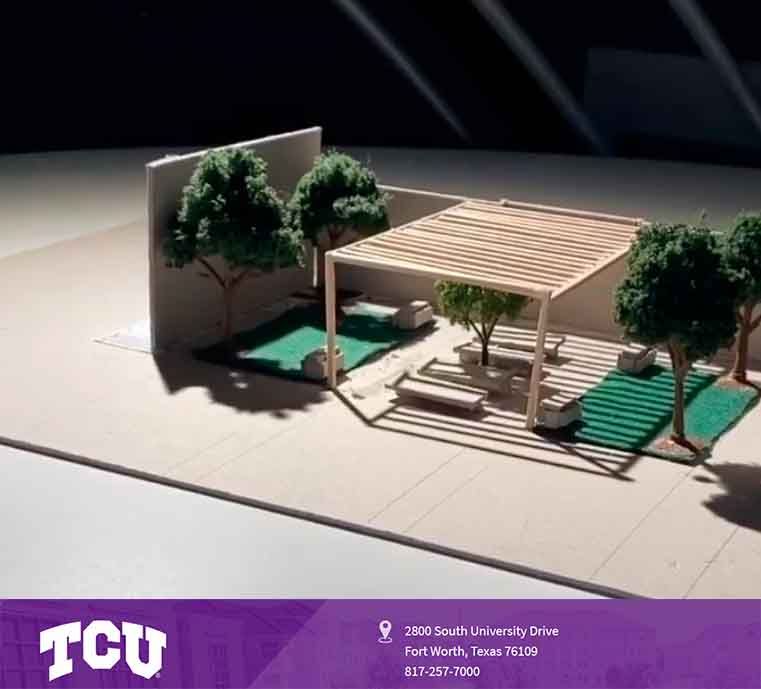 Students are working on their daylight studies on their scale model in the Beta nit Heliodon Orchard.
(26.4 KB).
Students are working on their daylight studies on their scale model in the Beta nit Heliodon Orchard.
(26.4 KB).
-
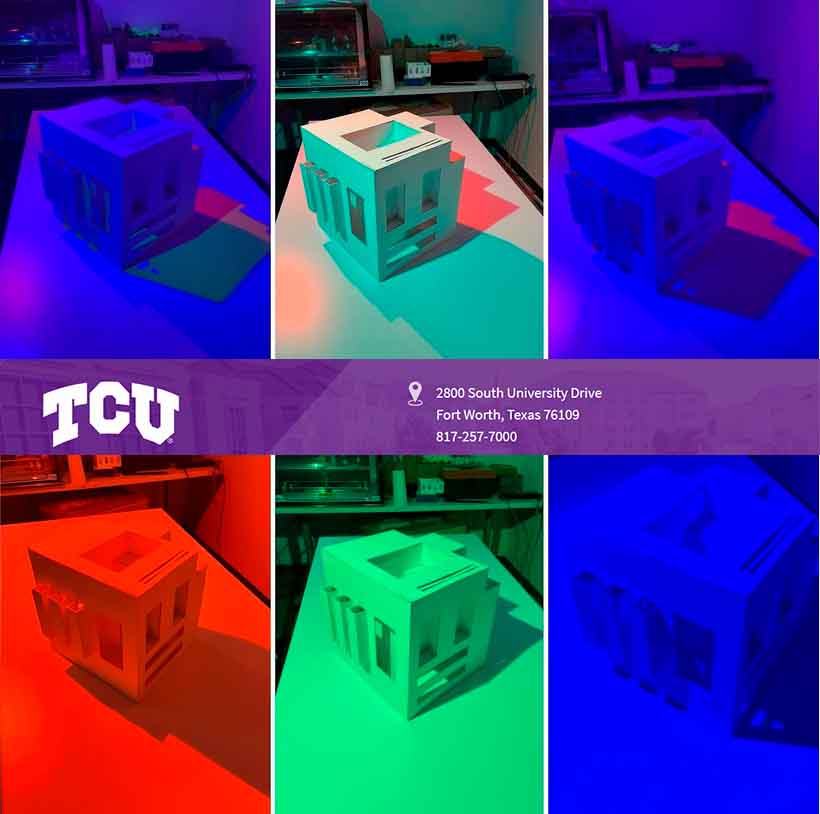 Color and Light Study… 1st Year Foundations
(35.8 KB).
Color and Light Study… 1st Year Foundations
(35.8 KB).
Contact
betanit.com
Phone: +39 0523 650217
email: info@betanit.com